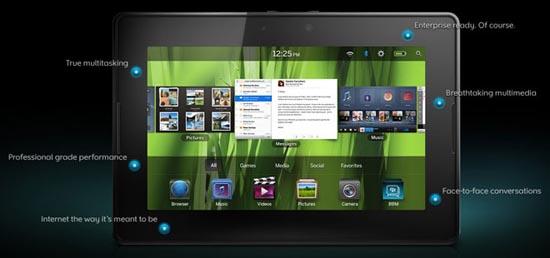
With the tablet race well underway, some contestants are really starting to shine. Tablets like the XOOM and Toshiba's dual-core tablet are gaining quite a following, and so is RIM's latest endeavor. The PlayBook has turned heads ever since it was rumored in mid-2010. The device is unlike anything we've seen from RIM before. Carrying a spec sheet that's daunting for competitors, new QNX software, and an aesthetically pleasing chassis and user interface, the PlayBook is destined for success, right? I'd like to believe it, but I'm not sold just yet.
The PlayBook has one major flaw, an Achilles' heel, Bridge. What is Bridge? It's the process used to pair your BlackBerry device to your PlayBook, using Bluetooth. This enables you to use the native BlackBerry applications like email, notes, tasks, etc. At first, it didn't seem so bad. But seeing that you cannot use the PlayBook to its fullest potential without tethering it to a BlackBerry handset, RIM will have quite a struggle to face. BlackBerry users and non-users alike are going to be turned away.
The whole point of a tablet is portability and speed; having quick access to vital information whenever and wherever. I carry my iPad to take notes, check my email, keep up with calendar events, and surf the web. Of course, these are all things I could do from a smartphone; it's just easier and more comfortable on tablet form. While the Bridge connection doesn't exactly hinder portability at all, it will slow you down and make the whole experience a lot more clunky. A lot of people still aren't sold on tablets and having to make a few unnecessary steps just to write a note, defeats the purpose – even for someone who welcomes the idea of tablets.
So why would RIM do this? Why would they shoot themselves in the foot? BlackBerry has always been more interested in offering business solutions. The PlayBook is no different. On the product specifications page, one section is titled “Built for business.” Go figure. It taunts its out-of-the-box compatibility with their one-of-a-kind BlackBerry Enterprise Server, security, and corporate data access. It all makes sense...for business users. It eliminates the risk of vital company information finding its way to the wrong hands by not locally storing said information. In other words, the PlayBook is any corporation's dream tablet.
However, when it comes to the consumer market, this could be the nail in the coffin. The multi-processing tablet has a list of specifications that nerds only dream of, and it's all packed into a neat-looking 7-inch package. For the optimistic ones, there is always the possibility of a third-party developer writing applications for these basic functions. RIM has been working on creating a rich development environment and encouraging developers to write for their platform by offering up some PlayBooks. But will that be enough? I wouldn't count on it. To date, BlackBerry applications are – for a lack of a better word – horrendous. That could definitely change with QNX and the PlayBook, but it isn't worth the risk right now. I've been drooling over the PlayBook since the first specs were revealed, but knowing what I know now, other tablets are looking better and better by the minute.
For businesses looking for a portable solution, the PlayBook is a dream come true. It's powerful, secure, and all-around a very nice device. On the other end of the spectrum, consumers are left scratching their heads wondering what RIM was thinking. They will be very hesitant, if even interested at all. For those without a BlackBerry device, the PlayBook will be lacking quite a few features. There are other options that will offer a more fulfilling experience out-of-box, regardless of what phone you're using. Knowing this about the PlayBook, will you be less prone to buy one?